Join More Than 50,000+ Subscribers and get latest camera news and rumors
NEW CAMERA VIDEOS ON YOUTUBE
|
By admin, on February 24th, 2024

Sony FX30 and FX3 Major Firmware Update arrive with some bug fixes and updates, FX30 Ver 4.00, and FX3 Ver 5.00, which are updated as follows:
List of latest Updates to Sony FX30 and FX3
1. Support to display the Wi-Fi signal strength.
2. Fixed a restart problem that some specific custom operations can cause.
3. Fixed an issue where the time setting cannot be saved after the power restart.
4. Improved exposure stability when extended ISO is used during video recording.
5. Improve the control stability of the camera.
source | Sony FX30 firmware update
Get LIVE RUMORS –> FACEBOOK | TWITTER | INSTAGRAM to get live news + Camera Rumors
By admin, on February 23rd, 2024

Lens Filter maker Kase announced 200mm f/5.6 full-frame manual focus based on reflex tech, the good thing is aperture down to 5.6 so they have used proper technique here, compared to other brand reflex lenses with 8 stops fixed aperture.
Kase 200mm F5.6 Reflex Specification
- Focus method: manual
- Product name: Folding lens 200mm F5.6
- Maximum photography magnification: 0.11X
- Focal length: 200mm
- Focus range: 2m-∞
- Aperture: F5.6
- Filter interface: 67mm
- Lens combination: 6 elements in 5 groups
- Port: Sony E/Canon RF/Nikon Z / Canon EF/Fuji G/Fuji X
- Frame: full frame
- Material: optical glass + aluminum alloy
- Weight size: 424g / 71*116mm
- Coating technology: Nano ultra-high reflective medium
- Film + multi-layer anti-reflective and anti-reflective coating
- Viewing angle: 12.3°
- Price: around $500
Follow us on our social pages FACEBOOK | TWITTER | INSTAGRAM, –> See More Camera Rumors subscribe to us via Email
By admin, on February 20th, 2024
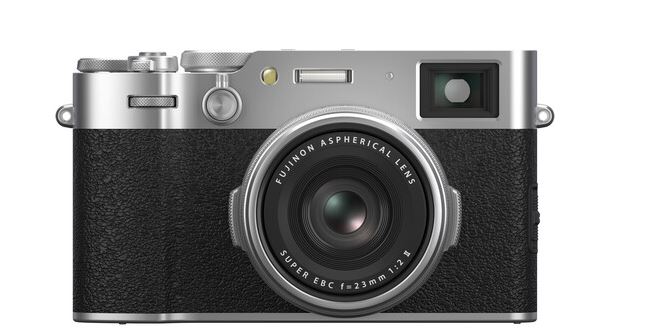
Finally, the Fuji X 100 VI camera was announced as we had predicted back in December. The camera features the same 40-megapixel APS-C X-Trans CMOS sensor as well as the EXR Processor 5.
FUJIFILM X100VI Major Features
- 40.2MP APS-C X-Trans CMOS 5 HR Sensor
- X-Processor 5 Image Processor
- Fujinon 23mm f/2 Lens
- 35mm Full-Frame Equivalent
- 6-Stop In-Body Image Stabilization
- 425-Point Intelligent Hybrid AF System
- Hybrid 0.66x OVF with 3.69m-Dot OLED EVF
- 3.0″ 1.62m-Dot Tilting Touchscreen
- Bluetooth and Wi-Fi Connectivity
- 20 Film Simulation Modes with REALA ACE

The camera features a sensor-shift image stabilization system, which is completely new for the Fuji X series. Before this, none of the Fuji X series cameras had an IBIS mechanism inside them, so that’s a big advantage we have with the new body.

The body design is similar to its predecessors, but the big change is the removal of the joystick controller by Fuji. The electronic viewfinder and the type of LCD display screen resolution are the same as we have in the predecessor. The tilting display mechanism of the screen has been improved to an extent, but it is not a vlogger-friendly screen.
The biggest limitation that we can notice right now is the use of UHS-I card slots in the camera. Fuji seems to have missed the update here. They have upscaled the sensor to 40 MP and the camera is able to record 6K videos up to 30p. All the standard features are available, but again we have a UHS-I card slot. That’s the biggest concern we have, as it can limit the continuous shooting speed as well as the video recording capability of the camera.
On the video side, the camera is very similar to the Fuji X-T5, or you can say it’s an X-T5 camera with a fixed 23mm lens.
Overall, the upgrade of the camera is made for photographers. You have a 40-megapixel new sensor, a new image processor, a brand new autofocusing algorithm inside the camera, and the camera also features an image stabilization system. So, if you combine all these factors, then this is an excellent option for a photographer.
Fuji X-100 VI Press Release
Fujifilm Debuts X100VI Mirrorless Digital Camera
X100VI’s iconic dial-based design and advanced technology includes new features for content creators of all types; special limited edition also announced in celebration of Fujifilm’s 90th anniversary
VALHALLA, N.Y., February 20, 2024 – FUJIFILM North America Corporation is pleased to officially announce the highly anticipated launch of FUJIFILM X100VI digital camera (“X100VI”, pronounced X100 Six), the newest model in the popular X100 Series. X100VI offers outstanding image quality in a compact, lightweight body, and features Fujifilm’s legendary color reproduction technology, which is best experienced through its revered Film Simulation modes, a feature, users have come to expect from all Fujifilm digital cameras, along with In-Body Image Stabilization (IBIS) and enhanced video capabilities.
“The viral popularity of our X100 Series cameras has shown us time and time again that making images is as tactile as it is technical,” said Victor Ha, vice president, FUJIFILM North America Corporation, Electronic Imaging Division. “X100VI continues this tradition by bringing our most advanced imaging technology to an image-making experience that feels organic and familiar to creatives of all levels.”
Product Features
- X-TransTM CMOS 5 HR and X-Processor 5 deliver high image quality and high performance
X100VI is equipped with the back-illuminated X-TransTM CMOS 5 HR sensor1 with approximately 40.2 megapixels. The sensor has an impressive pixel structure that allows light to be efficiently captured compared to prior X100 Series cameras. Additionally, ISO 125, which on the previous X100V model was only an extended sensitivity option, is now available natively on the X100VI. With its fixed, 23mmF2.0 lens, X100VI delivers sharp, high-resolution images.X100VI comes with 20 of Fujifilm’s popular Film Simulation modes, including the new REALA ACE mode, which applies a diverse range of distinctive tones to the user’s images. REALA ACE mode offers faithful color reproduction and high-contrast tonality, making it suitable for a wide variety of subjects and situations.
The camera incorporates an impressive autofocus (AF) prediction algorithm for reliable focusing, even when recording continuously-moving subjects. X100VI uses the subject detection AF X-Processor 5 to accurately track a range of subjects. Built using deep-learning AI technology, it can detect animals, birds, cars, motorcycles, bicycles, airplanes, trains, insects, and drones2.
- Enhanced high performance to maximize X100VI’s range
X100VI is the first camera in the X100 Series to incorporate a 5-axis, in-body image stabilization function with up to 6.0 stops3, while generally maintaining the X100 Series’ characteristic compact size and lightweight, only having increased in weight by 1.52 ounces over the previous model.The “Advanced Hybrid Viewfinder” allows the user to switch freely between the optical viewfinder (OVF) and the electronic viewfinder (EVF), pursuing the rangefinder style of photography that has been a hallmark of the X100 Series. The EVF is equipped with a high-resolution OLED panel with approximately 3.69 million dots, optimizing the immersive shooting experience.
The “Electronic Range Finder” (ERF) function allows a small EVF to be simultaneously displayed on the OVF. Using this feature, the photographer can view either the entire frame or the area of critical focus, increasing the capabilities of a standard optical viewfinder. The ERF function is highly convenient, especially for street photography.
X100VI is capable of 6.2K/30P movie recording, a first for the X100 Series. The camera is also equipped with a tracking AF function during movie recording to ensure high-quality content creation.
X100VI offers an accessory-free, native Camera to Cloud integration for Adobe’s Frame.io, which allows users to wirelessly connect any X100VI to an active internet connection, authenticate it to Frame.io, and automatically upload photos and videos just moments after they are created. This can drastically reduce the amount of time needed to reach the end of any post-production workflow. X100VI is the latest in FUJIFILM‘s digital camera portfolio to integrate Frame.io’s Camera to Cloud technology, joining X-H2, X-H2S, and GFX100 II in offering the capability.
- Sophisticated, functional product design
As with the prior model, aluminum is used for the top and bottom surfaces of the X100VI body. Aluminum, which features a high degree of malleability, is pressed and machined for crisp, clean edges, and the surface is finely blasted for a smooth texture. In addition, anodized aluminum is used on the camera surface to produce a high-quality finish.X100VI’s ultra-thin tilt LCD monitor can be stored in a fully flat position, a design leveraged from the X100V. The stylish, integrated body design allows for a variety of shooting styles, from high to low angles. The shape of the grip has been fine-tuned to ensure a secure yet comfortable feel. The positions of the buttons on the back of X100VI have been designed to maximize ease of operation with the right hand, enabling extremely comfortable shooting while utilizing the viewfinder.
- Wide variety of compatible accessories enhance X100VI’s capabilities
Weather resistance is available for X100VI when the optional AR-X100 adapter ring (MSRP $49.99 USD/$50.00 CAD, available in silver and black) and the PRF-49 protection filter (MSRP $55.99 USD/$70.00 CAD) are used in conjunction with X100VI’s lens. This allows the user to continue making images in challenging weather conditions.Fujifilm’s optional LH-X100 lens hood (MSRP $139.99 USD/$100.00 CAD, available in black and silver) is also compatible with X100VI. In addition to being lightweight and precisely crafted from machined metal, the hood is cleverly designed not to obstruct the field of view when looking through the viewfinder, thus achieving light- shielding performance.
Two separately offered FUJIFILM conversion lenses allow the user to change the focal length without changing the optical performance of X100VI, thereby enhancing the photographic field. WCL-X100 II (MSRP $349.95 USD/$450.00 CAD, available in silver and black) is a dedicated wide conversion lens that multiplies the fixed focal length by approximately 0.8x, converting it to 28mm (35mm format equivalent), while the TCL-X100 II (MSRP $349.95 USD/$450.00 CAD, available in silver and black) is a dedicated teleconversion lens for narrowing the field of view by multiplying the fixed focal length by approximately 1.4x, converting it to 50mm (35mm format equivalent).
Adding the separatelt offered, LC-X100V genuine leather case (MSRP $79.99 USD/$100.00 CAD) ensures the X100VI can be carried in style. The battery and the user’s memory card can be inserted and removed from the camera without the need to remove the camera from this case.
Limited Edition X100VI Units Also Announced
To celebrate Fujifilm’s 90th anniversary year in 2024, a special Limited Edition of 1,934 X100VI cameras will be made available by Fujifilm, worldwide. The Limited Edition camera body is engraved with the corporate brand logo from Fujifilm’s founding in 1934, and each unit bears a unique serial number. These numbered X100VI units are packaged in a special, soft-release box that includes a special strap and Fujifilm history cards. The Limited Edition X100VI units will be available in extremely limited quantities and vary depending geographical location. Please contact your local Fujifilm sales and marketing company to explore the opportunity to purchase the item in your area.
Pricing and Availability:
X100VI is expected to be available from Fujifilm dealers early March 2024 at a Manufacturer’s Suggested Retail Price of $1,599.95 USD and $2,159.99 CAD.
X100VI Limited Edition is expected to be available directly from Fujifilm commencing in late March 2024 at a Manufacturer’s Suggested Retail Price of $1,999.99 USD and $2,699.99 CAD.
By admin, on February 20th, 2024
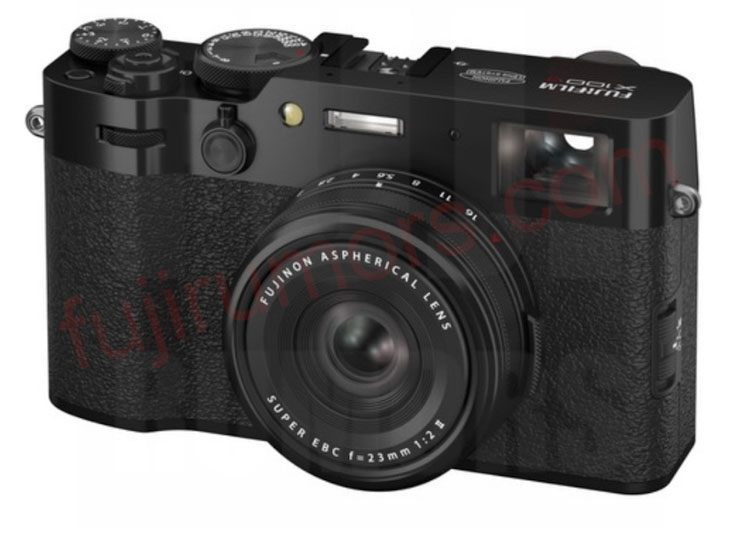
We have the leaked images of the Fuji X 100 VI camera, thanks to the rumor mill for sharing these early images before the announcement. The overall look and size of the camera somehow look similar to the previous generation of Fuji X100 series cameras. Once the camera is out, we will have a detailed review discussing what we like and what we don’t like about it
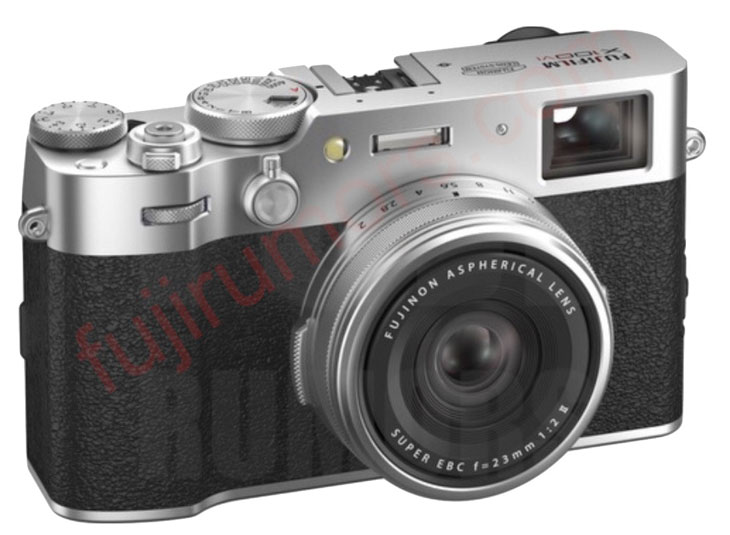
Follow us on our social pages FACEBOOK | TWITTER | INSTAGRAM, –> See More Fuji Rumors Or subscribe to us via Email
Source | Image Credit FR.com
By admin, on February 19th, 2024
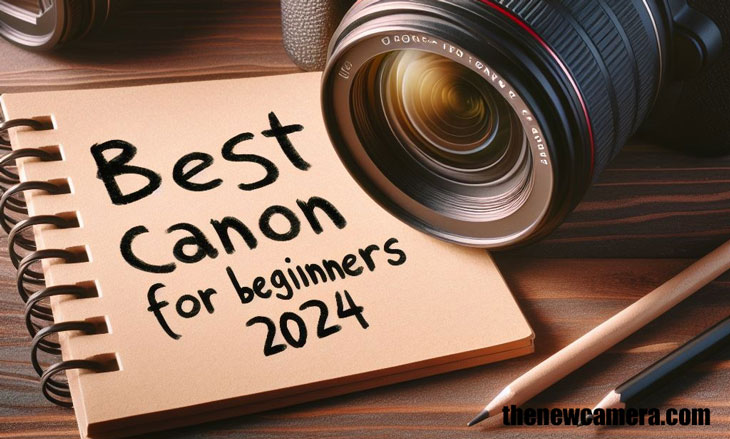
A lot of people are still buying the Canon T7 camera. Is it a good camera? Should you also buy a T7 and save a few bucks, or should you go towards the mirrorless lineup of Canon?
The biggest issue with DSLRs like the Canon T7 is the limited 9-point focusing mechanism. So if you are planning to buy a DSLR like the Canon T7, you should forget about the eye autofocus tracking that we have in mirrorless cameras. With the help of eye autofocus tracking, you can get properly well-focused images of the subject without any hassle.
But if you use the Canon T7, then you have to place the subject to fit inside the 9 centered autofocus points of the camera. Among one of the 9 points, you have to focus on a single point that falls on the same plane as the subject’s eye. I mean to say, mirrorless autofocusing mechanisms are now much faster compared to the DSLR face detect autofocus system. Since I have used both DSLRs and mirrorless cameras, I am sharing my personal experience with you.
| Feature |
Canon T7 |
Canon R100 |
| Sensor |
24-megapixel CMOS |
24.1-megapixel CMOS |
| Image Processor |
DIGIC 4+ |
DIGIC 8 |
| Subject Recognition |
Limited 9-point focusing mechanism |
Recognizes people (eyes, faces, and heads), animals (specifically dogs, cats, birds, and horses), or vehicles (motorsport cars and bikes, trains, and aircraft) |
| Continuous Shooting Speed |
Up to 3 frames per second |
Up to 6.5 frames per second |
| Display Screen |
Fixed, non-touch |
Fixed, non-touch |
| Video Recording |
Maximum continuous recording time for a single video of 29 minutes and 59 seconds | No Continous Video AutoFocus |
4K 25p or HD 120p | DPAF Fulltime AF | Eye AF tracking | 3D object Tracking |
| Weight |
Approx. 475 g |
Approx. 356 g |
| Image Quality |
Same as Canon R100 [Almost] |
Inferior to Canon R10 and R50 |
So the biggest downside of DSLRs like the Canon T7 is that they don’t have an algorithm for tracking, and hence the autofocus system is completely useless compared to the Canon mirrorless cameras we have.
The other biggest difference you will notice, apart from struggling with autofocus points, is the continuous autofocus feature in the video. DSLRs like the Canon T7 don’t have a continuous autofocus feature in video.
1. Best Canon Camera for Beginners Under $500
These are the limitations we have with the Canon entry-level DSLRs, and fortunately, the Canon R100 camera is in the same price range as the Canon T7 DSLR. So if you don’t have the budget to spend on Canon’s higher-end models, the R100 could be a good option.

Recommendation: For Photographer, we highly recommend Canon R100 camera under $500 Range
Get The Best Canon R100 Camera – Amazon.com | B&H Store USA
2. Best Canon Camera for Beginners Under $700
Let’s compare the Canon R50 camera with the Canon R100 camera and clear up any confusion about which camera you should buy as a beginner.
| Feature |
Canon R50 |
Canon R100 |
| Sensor |
24-megapixel CMOS |
24.1-megapixel CMOS |
| Image Processor |
DIGIC X |
DIGIC 8 |
| Subject Recognition |
Recognizes people (eyes, faces, and heads), animals (specifically dogs, cats, birds, and horses), or vehicles (motorsport cars and bikes, trains, and aircraft) |
Recognizes faces and eyes, but for animal and car detection, you’ll need to step up to the more expensive EOS R50 |
| Continuous Shooting Speed |
Up to 15 frames per second |
Up to 6.5 frames per second |
| Display Screen |
Vari-angle | Fully Touch |
Fixed, non-touch |
| Video Recording |
4K 30p (6K oversampled) & FHD 120p |
4K 25p & HD 120p (No Oversampling) |
| Weight |
Approx. 328 g (375g with card and battery) |
Approx. 356 g |
| Image Quality |
Same as Canon R10 |
Inferior to Canon R10 and R50 |
We have some limitations here. The limitation is that we do not have Canon R50 camera samples. We have the R10 and R100 samples. The good thing is both of these cameras use the same sensor. Not only the same sensor, the Canon R50 and the Canon R10 cameras use the same image processor. Only the Canon R100 camera uses the older DIGIC 8 image processor, since the Canon R10 and R50 share the same image sensor and processor the image quality of the cameras will remain the same.

Looking at the samples, we can notice that there is a one-stop difference between the two cameras. So, we do have technical core differences between all these three cameras. The R100 camera uses the older image processor, has a 6.5 per second continuous shooting speed, and doesn’t have a touch display screen. That display screen is also fixed, so we have a lot of limitations with this camera. Associated with these limitations, we get inferior image quality in the Canon R100 camera compared to the other two on the list.

Best Canon Camera Under $700 Price Range Canon R50 – Amazon.com | B&H Store
So, for those who are looking to buy the Canon R100 camera, I would say that there is a very small price difference between the Canon R50. If you can manage to buy the R50 camera, you should at any cost. It’s highly recommended to you. Since you’re getting inferior core specifications along with the Canon R100 camera, you are also getting inferior image quality. So, steer clear of that.
3. Best Canon Camera for Beginners Under $1000
Let Us compare the Canon R50 and Canon R10, and find out the reason why should you buy the Canon R10 instead of Canon R50 if you have approx $1000 budget for your camera in 2024.
| eature |
Canon R10 |
Canon R50 |
| Sensor |
24MP APS-C CMOS |
24.2MP APS-C CMOS |
| Image Processor |
DIGIC X |
DIGIC X |
| Low Light Performance |
Almost same as Canon R50 |
|
| Mechanical Shutter Speed |
Up to 15 fps |
Up to 12 fps |
| Electronic Shutter Speed |
Up to 23 fps |
Up to 15 fps |
| Video Recording |
4K 30p full sensor & 4K 60p cropped |
4K 30p full sensor |
| Weight |
Approx. 429 g |
Approx. 375 g (lighter) |
| Image Quality |
Similar |
|
| Subject Recognition |
People (eyes, faces, heads), animals (dogs, cats, birds, horses), vehicles (motorsports cars/bikes, trains, aircraft) |
People (eyes, faces, heads) |
| Autofocus Points |
651 AF Zones | 4503 individually selectable AF points |
same as Canon R10 |
| Physical Dials/Buttons |
More dedicated dials and buttons for manual control [Joy stick on the rear side] |
Fewer physical controls, relies more on touchscreen |
| Battery Life |
CIPA rated 430 shots |
CIPA rated 390 shots |
| Headphone Jack |
Yes |
No |
Among all these three cameras, as I have said, if your budget allows, you should go with the Canon R50. But again, if you talk about the best of all these three, then without a doubt, the Canon R10 is superior.
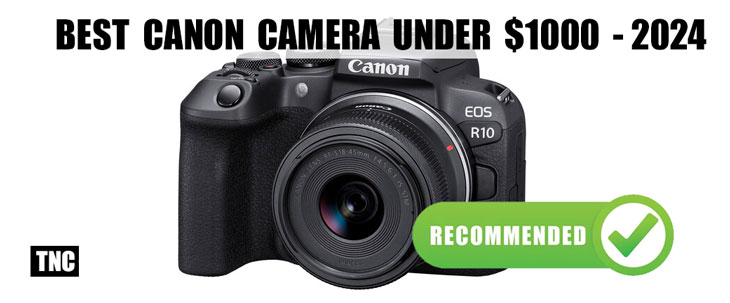
Buy Canon R10 Camera from Amazon.com | B&H Store
Why so? With this camera, you are getting a pre-shooting buffer, a feature that professionals will love to use. Other features include a 15 FPS mechanical shutter that will give you zero distortion while capturing images. The mechanical shutter speed of the R50 is limited to 12 frames per second. If we compare the electronic shutter speed in the Canon cameras, the R10 has a higher speed.
Other features include lens breathing correction, a better, higher resolution display screen, and the ability to record 4K videos at 60 frames per second with some crop.
* We have excluded the Canon M series cameras since they have been completely discontinued and even their Lenses are not usable on any mount | So in 2024 kindly don’t invest in the EOS M Series
Lets me know if you have any further questions
By admin, on February 19th, 2024
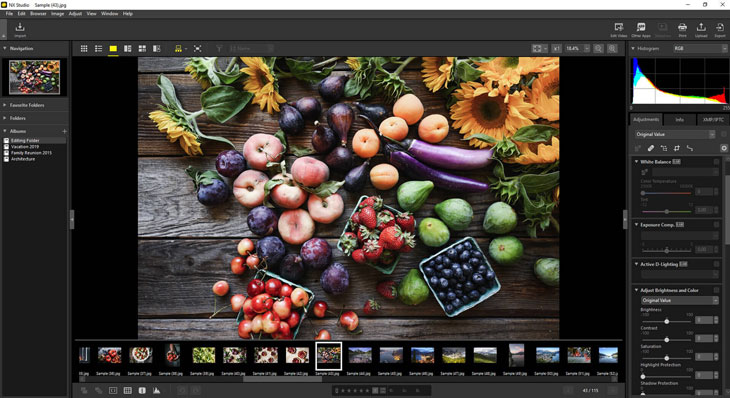
Nikon added a new software update to the Nikon NX Software, the software now supports Z8 F2.0 Firmware update and several other fixes.
Changes from Version 1.5.0 to 1.6.0
• Added support for Z 8 firmware version 2.00.
• Improved filtering operation when the “show sequences as single images” setting is disabled.
• Fixed the following issues:
– Could not enable [PF Flare Control] for a picture taken with a NIKKOR Z 600mm f/6.3 VR S lens.
– If NX Studio was started without network connection, an error message was shown.
– Pictures taken with [Clarity] set to [A] (auto) and [Contrast] to [-3] with D5, D850, D500, and D7500 cameras were not displayed correctly.
– Selecting a folder containing images edited with Capture NX would force NX Studio to terminate.
– When a folder containing pictures shot in burst photography was selected, it was not displayed correctly.
– The [Browse…] button was not displayed if a long destination path was specified for [Open with Application] > [Destination for Files Opened in Other Applications] in the [Options] dialog.
Ur NX software will automatically get the update | if you haven’t downloaded yet google for NX software and download it NOW.
See more details about Nikon Z6 Mark III and more Nikon Rumors
Follow us on our social pages FACEBOOK | TWITTER | INSTAGRAM to get live news + Nikon Rumors 24X7
By admin, on February 15th, 2024
The BCN 2024 awards are out now and here are the rankings. If you look at the rankings, the DSLR category is still being led by Canon. ANd in Second place we have Nikon as usual in DSLR Zone with approx 17.1% of the market share.
As you know, from 2018 both Nikon and Canon have stopped the development of DSLR cameras and lenses and are now focused on the development of mirrorless lenses and cameras. So, the cannibalization of DSLR cameras from these DSLR makers started in 2018, but still, there are consumers out there who love to buy DSLRs and in that specific category, Canon is still leading.
As usual, Sony is leading in the mirrorless zone with approximately 34% of the entire market share. Next to Sony, we have Canon with approximately 28% of the market share and after that, we have OM Digital Solutions with 12.5% of the market share. And, after that, we have Nikon.
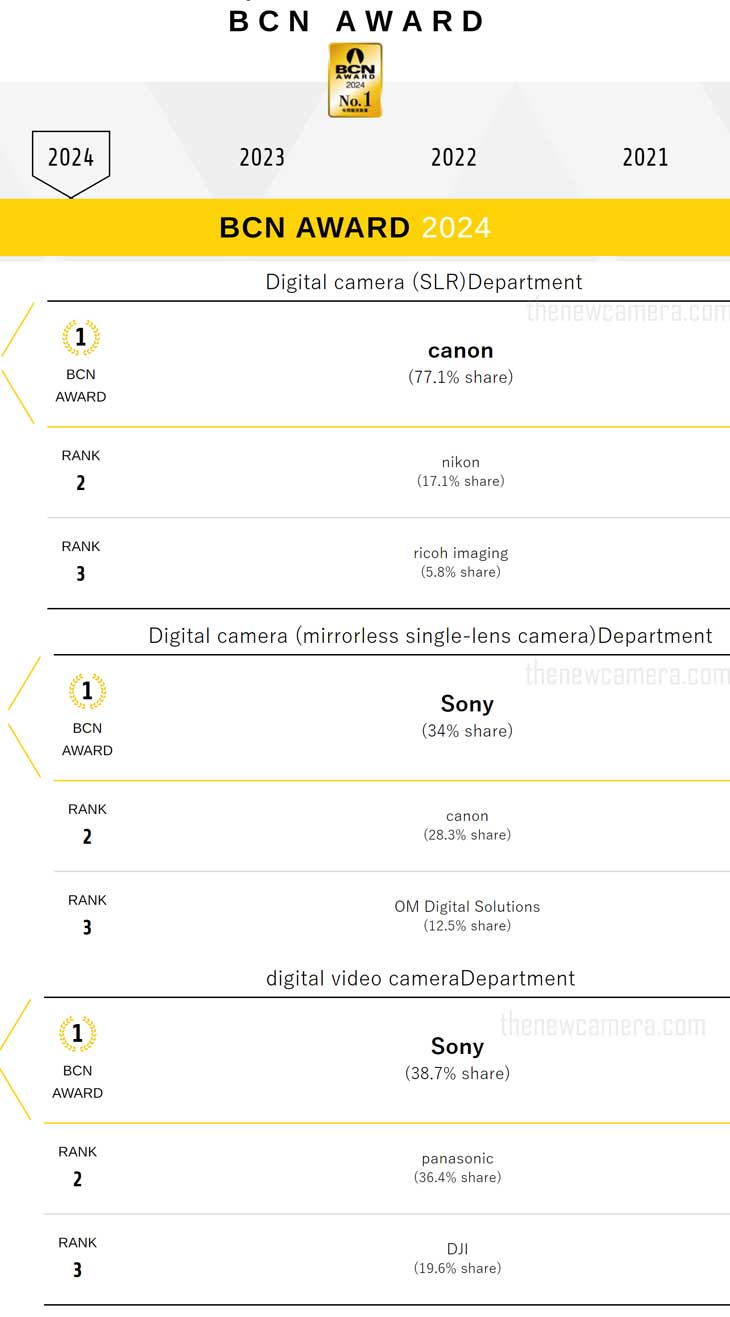
Get LIVE RUMORS –> FACEBOOK | TWITTER | INSTAGRAM to get live news 4X7
source – BCN
|
KEEP THIS BLOG ALIVE - Support New Camera Buy Canon Lenses, Buy Music CD or Digital Camera at amazon it helps this site, and you do not pay anything extra, it is just a way to help support this site.

|



















